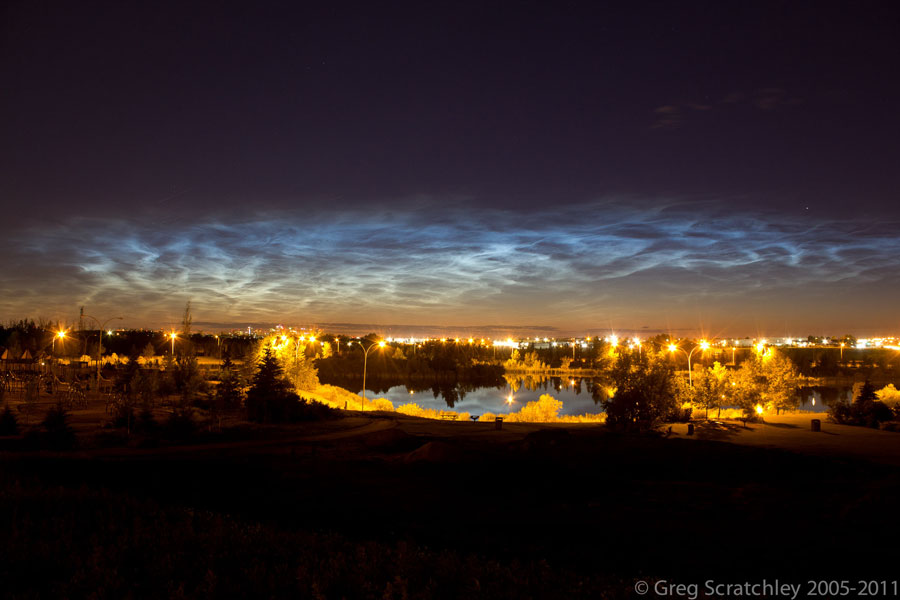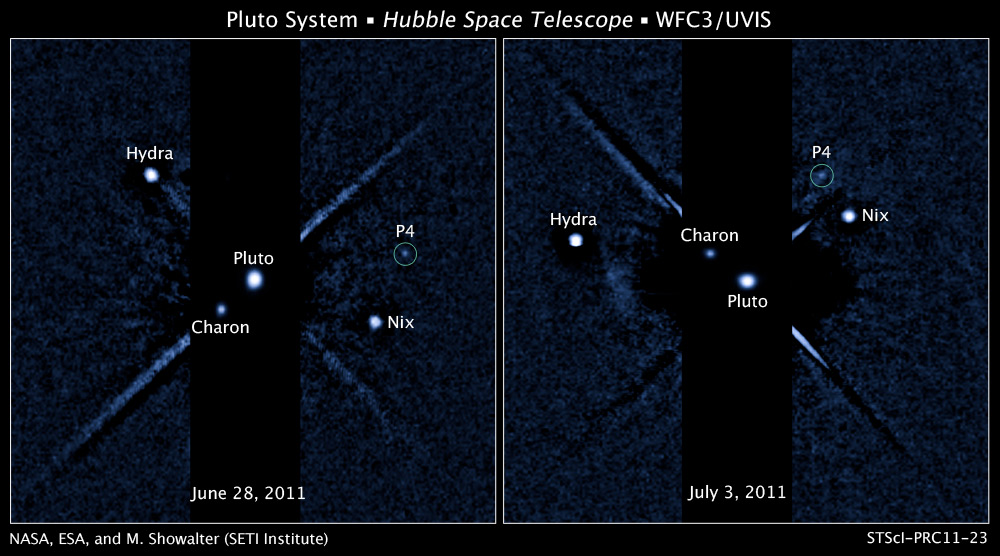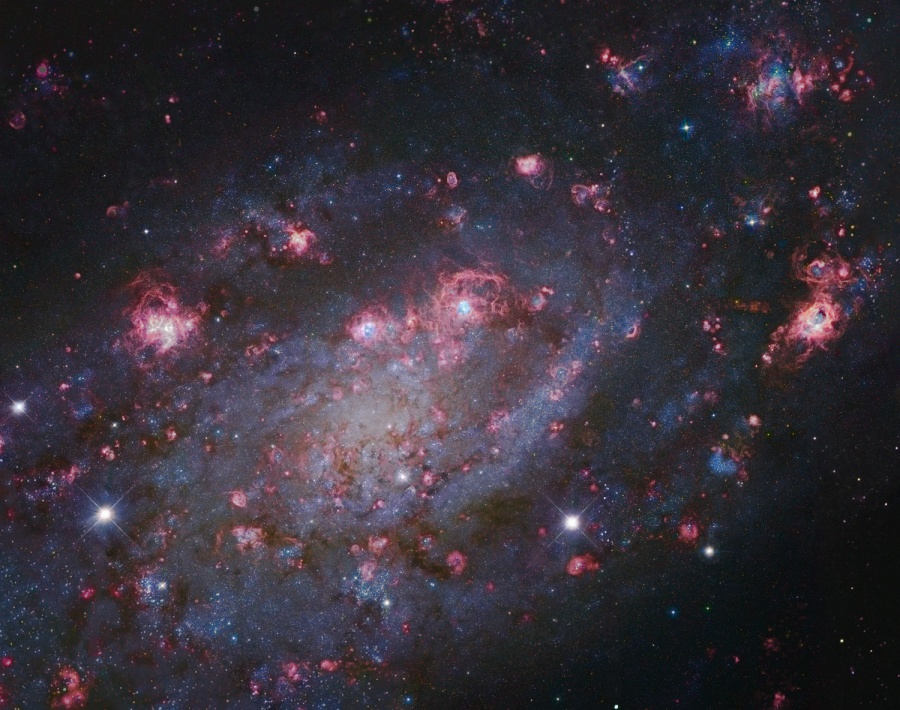Poll: Astronomy Picture of the Week for 2011 July 17-23
Poll: Astronomy Picture of the Week for 2011 July 17-23
_______________________________________________________________
Please vote for the TWO best Astronomy Pictures of the Day (image and text) of July 17-23, 2011.
(Repeated APODs are not included in the poll.)
All titles are clickable and link to the original APOD page.
We ask for your help in choosing an APOW as this helps Jerry and Robert create "year in APOD images" review lectures, create APOM and APOY polls that can be used to create a free PDF calendar at year's end, and provides feedback on which images and APODs were relatively well received. You can select two top images for the week.
We are very interested in why you selected the APODs you voted for, and enthusiastically welcome your telling us why by responding to this thread.
Thank you!
_______________________________________________________________
<- Previous week's poll
What's that astronaut doing? Unloading a space shuttle -- for the last time. After the space shuttle Atlantis docked with the International Space Station (ISS) last week, station astronaut Mike Fossum underwent a long spacewalk that included carrying a Robotics Refueling Mission (RRM) payload from Atlantis' cargo bay to a platform used by the space station's famous robot DEXTRE. On Earth, the RRM box would have the weight of about three people and be much more difficult to carry. Pictured above on the far left, DEXTRE prepares to help move a failed space pump back to Atlantis. Visible behind the astronaut is the space station's Kibo Experimental Module. The much awaited final shuttle return flight is currently scheduled for 5:56 am EDT Thursday, July 21. What does the surface of asteroid Vesta look like? The brightest asteroid in the Solar System and the object which takes up about 10 percent of the entire mass of the main asteroid belt had never been seen up close before. Over the past few weeks, however, the robotic Dawn spacecraft became the first spacecraft ever to approach Vesta. A few days ago, just after attaining orbit, Dawn took the above image. Early images show Vesta to be an old and battered world, covered with craters, bulges, grooves, and cliffs. Studying Vesta may give clues to the formative years of our early Solar System, as the unusual world may be one of the largest remaining protoplanets. After a year of studying Vesta, Dawn is scheduled to leave orbit and, in 2015, approach the only asteroid-belt object that is larger: Ceres. Sometimes it's night on the ground but day in the air. As the Earth rotates to eclipse the Sun, sunset rises up from the ground. Therefore, at sunset on the ground, sunlight still shines on clouds above. Under usual circumstances, a pretty sunset might be visible, but unusual noctilucent clouds float so high up they can be seen well after dark. Normally too dim to be seen, they may become visible at sunset during late summer when illuminated by sunlight from below. Noctilucent clouds are the highest clouds known and thought to be part of polar mesospheric clouds. Pictured above earlier this month, a network of noctilucent clouds cast an eerie white glow after dusk, above the the city of Edmonton, in Alberta, Canada. Much about noctilucent clouds has been discovered only over the past few years, while how they form and evolve remains a topic of active research. The Parkes 64 meter radio telescope is known for its contribution to human spaceflight, famously supplying television images from the Moon to denizens of planet Earth during Apollo 11. The enormous, steerable, single dish looms in the foreground of this early evening skyscape. Above it, the starry skies of New South Wales, Australia include familiar southerly constellations Vela, Puppis, and Hydra along with a sight that will never be seen again. Still glinting in sunlight and streaking right to left just below the radio telescope's focus cabin, the space shuttle orbiter Atlantis has just undocked with the International Space Station for the final time. The space station itself follows arcing from the lower right corner of the frame, about two minutes behind Atlantis in low Earth orbit. Atlantis is set for its final landing early this morning (July 21, 5:56am EDT) at NASA's Kennedy Space Center. Nix and Hydra were first introduced to human eyes in Hubble Space Telescope images from May 2005, as Pluto's second and third known moons. Now Hubble images have revealed a fourth satellite for the icy, dwarf planet. Provisionally designated P4, it completes an orbit of Pluto in about 31 days. Presently Pluto's smallest and dimmest known moon, P4 is estimated to be 13 to 34 kilometers across. The newly discovered satellite was first spotted in Hubble observations from June 28, and later confirmed in a follow-up on July 3 and July 18. These two panels are composites of both the short and long exposures that include brighter Pluto itself along with Pluto's largest moon Charon. Camera noise and image artifacts also show up in the long exposure segments. The Hubble observations were made while searching for faint rings around the distant world in support of NASA's New Horizons mission, set to fly by the Pluto system in 2015. Magnificent island universe NGC 2403 stands within the boundaries of the long-necked constellation Camelopardalis. Some 10 million light-years distant and about 50,000 light-years across, the spiral galaxy also seems to have more than its fair share of giant star forming HII regions, marked by the telltale reddish glow of atomic hydrogen gas. In fact, NGC 2403 closely resembles another galaxy with an abundance of star forming regions that lies within our own local galaxy group, M33 the Triangulum Galaxy. Of course, supernova explosions follow close on the heels of the formation of massive, short-lived stars and in 2004 one of the brightest supernovae discovered in recent times was found in NGC 2403. Easy to confuse with a foreground star in our own Milky Way Galaxy, the powerful supernova is seen here as the spiky, bright "star" at the left edge of the field. This stunning cosmic portrait is a composite of space and ground-based image data from the Hubble Legacy Archive and the 8.2 meter Subaru Telescope at the summit of Mauna Kea, Hawaii.
<- Previous week's poll
Please vote for the TWO best Astronomy Pictures of the Day (image and text) of July 17-23, 2011.
(Repeated APODs are not included in the poll.)
All titles are clickable and link to the original APOD page.
We ask for your help in choosing an APOW as this helps Jerry and Robert create "year in APOD images" review lectures, create APOM and APOY polls that can be used to create a free PDF calendar at year's end, and provides feedback on which images and APODs were relatively well received. You can select two top images for the week.
We are very interested in why you selected the APODs you voted for, and enthusiastically welcome your telling us why by responding to this thread.
Thank you!
_______________________________________________________________
<- Previous week's poll
What's that astronaut doing? Unloading a space shuttle -- for the last time. After the space shuttle Atlantis docked with the International Space Station (ISS) last week, station astronaut Mike Fossum underwent a long spacewalk that included carrying a Robotics Refueling Mission (RRM) payload from Atlantis' cargo bay to a platform used by the space station's famous robot DEXTRE. On Earth, the RRM box would have the weight of about three people and be much more difficult to carry. Pictured above on the far left, DEXTRE prepares to help move a failed space pump back to Atlantis. Visible behind the astronaut is the space station's Kibo Experimental Module. The much awaited final shuttle return flight is currently scheduled for 5:56 am EDT Thursday, July 21. What does the surface of asteroid Vesta look like? The brightest asteroid in the Solar System and the object which takes up about 10 percent of the entire mass of the main asteroid belt had never been seen up close before. Over the past few weeks, however, the robotic Dawn spacecraft became the first spacecraft ever to approach Vesta. A few days ago, just after attaining orbit, Dawn took the above image. Early images show Vesta to be an old and battered world, covered with craters, bulges, grooves, and cliffs. Studying Vesta may give clues to the formative years of our early Solar System, as the unusual world may be one of the largest remaining protoplanets. After a year of studying Vesta, Dawn is scheduled to leave orbit and, in 2015, approach the only asteroid-belt object that is larger: Ceres. Sometimes it's night on the ground but day in the air. As the Earth rotates to eclipse the Sun, sunset rises up from the ground. Therefore, at sunset on the ground, sunlight still shines on clouds above. Under usual circumstances, a pretty sunset might be visible, but unusual noctilucent clouds float so high up they can be seen well after dark. Normally too dim to be seen, they may become visible at sunset during late summer when illuminated by sunlight from below. Noctilucent clouds are the highest clouds known and thought to be part of polar mesospheric clouds. Pictured above earlier this month, a network of noctilucent clouds cast an eerie white glow after dusk, above the the city of Edmonton, in Alberta, Canada. Much about noctilucent clouds has been discovered only over the past few years, while how they form and evolve remains a topic of active research. The Parkes 64 meter radio telescope is known for its contribution to human spaceflight, famously supplying television images from the Moon to denizens of planet Earth during Apollo 11. The enormous, steerable, single dish looms in the foreground of this early evening skyscape. Above it, the starry skies of New South Wales, Australia include familiar southerly constellations Vela, Puppis, and Hydra along with a sight that will never be seen again. Still glinting in sunlight and streaking right to left just below the radio telescope's focus cabin, the space shuttle orbiter Atlantis has just undocked with the International Space Station for the final time. The space station itself follows arcing from the lower right corner of the frame, about two minutes behind Atlantis in low Earth orbit. Atlantis is set for its final landing early this morning (July 21, 5:56am EDT) at NASA's Kennedy Space Center. Nix and Hydra were first introduced to human eyes in Hubble Space Telescope images from May 2005, as Pluto's second and third known moons. Now Hubble images have revealed a fourth satellite for the icy, dwarf planet. Provisionally designated P4, it completes an orbit of Pluto in about 31 days. Presently Pluto's smallest and dimmest known moon, P4 is estimated to be 13 to 34 kilometers across. The newly discovered satellite was first spotted in Hubble observations from June 28, and later confirmed in a follow-up on July 3 and July 18. These two panels are composites of both the short and long exposures that include brighter Pluto itself along with Pluto's largest moon Charon. Camera noise and image artifacts also show up in the long exposure segments. The Hubble observations were made while searching for faint rings around the distant world in support of NASA's New Horizons mission, set to fly by the Pluto system in 2015. Magnificent island universe NGC 2403 stands within the boundaries of the long-necked constellation Camelopardalis. Some 10 million light-years distant and about 50,000 light-years across, the spiral galaxy also seems to have more than its fair share of giant star forming HII regions, marked by the telltale reddish glow of atomic hydrogen gas. In fact, NGC 2403 closely resembles another galaxy with an abundance of star forming regions that lies within our own local galaxy group, M33 the Triangulum Galaxy. Of course, supernova explosions follow close on the heels of the formation of massive, short-lived stars and in 2004 one of the brightest supernovae discovered in recent times was found in NGC 2403. Easy to confuse with a foreground star in our own Milky Way Galaxy, the powerful supernova is seen here as the spiky, bright "star" at the left edge of the field. This stunning cosmic portrait is a composite of space and ground-based image data from the Hubble Legacy Archive and the 8.2 meter Subaru Telescope at the summit of Mauna Kea, Hawaii.
<- Previous week's poll
A closed mouth gathers no foot.
Re: Poll: Astronomy Picture of the Week for 2011 July 17-23
These pictures are super competitors for votes, based on the close tally right now. I think my votes here recognize how fast these days we see more of and farther into our solar system: the Vesta picture was published a few days after Dawn reached it, and we look at the newly discovered moon of Pluto less than a month after its discovery.
Also, I cannot decide whether I am marveling at the objects or at what we are doing to find them. Take the ion fuel Dawn--amazing engine that it has--its picture of Vesta makes one feel one is hovering in front of it.
Viewing these APODs is like having coffee in the morning, the mind wakes up.
Also, I cannot decide whether I am marveling at the objects or at what we are doing to find them. Take the ion fuel Dawn--amazing engine that it has--its picture of Vesta makes one feel one is hovering in front of it.
Viewing these APODs is like having coffee in the morning, the mind wakes up.
-
zorts
Re: Poll: Astronomy Picture of the Week for 2011 July 17-23
Great set of choices. I voted for noctilucent clouds because that APOD caused me to spend a good 10 minutes reading about clouds and atmospheric layers. If the goal of APOD is to trigger learning, that once sure did it for me!
-
ecsallee
Re: Poll: Astronomy Picture of the Week for 2011 July 17-23
Voted for noctilucent clouds since looked totally unreal to me, and learned something about reality. Voted for Busy space Walk on basis of photographic quality...lighting, interesting composition. Great images...as ever. Keep up the good work!
- Anthony Barreiro
- Turtles all the way down
- Posts: 793
- Joined: Wed May 11, 2011 7:09 pm
- Location: San Francisco, California, Turtle Island
Re: Poll: Astronomy Picture of the Week for 2011 July 17-23
I voted for the same two pictures, Vesta and Pluto and his moons, because they're breaking news. All the pictures are great, but these two have the greatest current interest.Celestial wrote:These pictures are super competitors for votes, based on the close tally right now. I think my votes here recognize how fast these days we see more of and farther into our solar system: the Vesta picture was published a few days after Dawn reached it, and we look at the newly discovered moon of Pluto less than a month after its discovery.
Also, I cannot decide whether I am marveling at the objects or at what we are doing to find them. Take the ion fuel Dawn--amazing engine that it has--its picture of Vesta makes one feel one is hovering in front of it.
Viewing these APODs is like having coffee in the morning, the mind wakes up.
-
bilby2
Re: Poll: Astronomy Picture of the Week for 2011 July 17-23
Pluto ! Demoted to a Planetoid & now finding it has its own sattelite moon? Vesta a continuous reminder of of Naures surprises !
-
islader2
Re: Poll: Astronomy Picture of the Week for 2011 July 17-23
The fact that Pluto has FOUR {plus} moons convinces me even more to believe that Pluto IS a planet. How can I vote for anything else? Thanx.
Re: Poll: Astronomy Picture of the Week for 2011 July 17-23
Easily! You have TWO votes, so can still vote for something else even though you've voted for Pluto!How can I vote for anything else?
A closed mouth gathers no foot.
- neufer
- Vacationer at Tralfamadore
- Posts: 18805
- Joined: Mon Jan 21, 2008 1:57 pm
- Location: Alexandria, Virginia
Re: Poll: Astronomy Picture of the Week for 2011 July 17-23
islader2 wrote:
The fact that Pluto has FOUR {plus} moons convinces me even more to believe that Pluto IS a planet.
Click to play embedded YouTube video.
Art Neuendorffer





